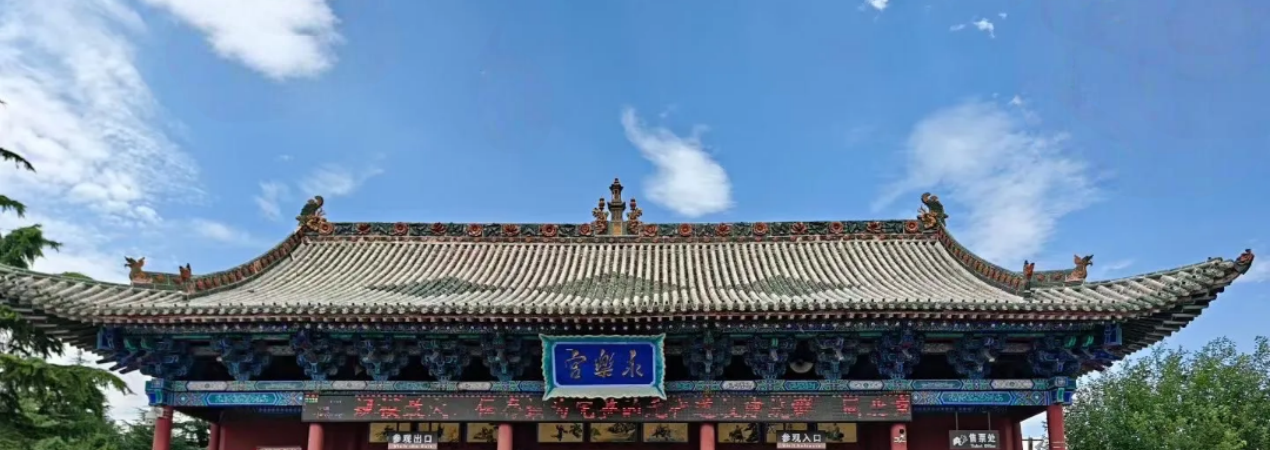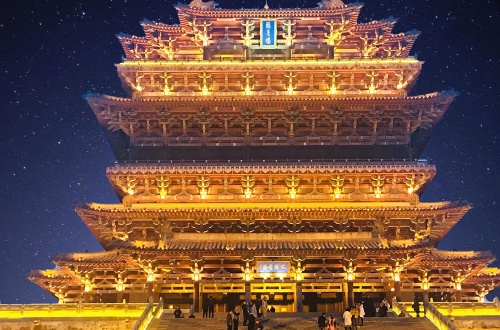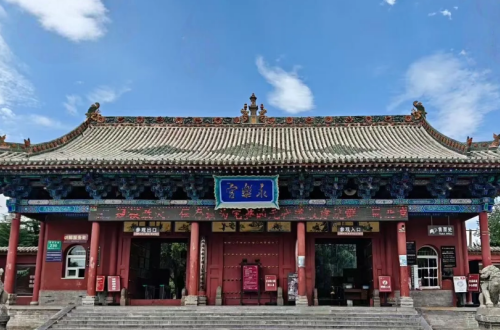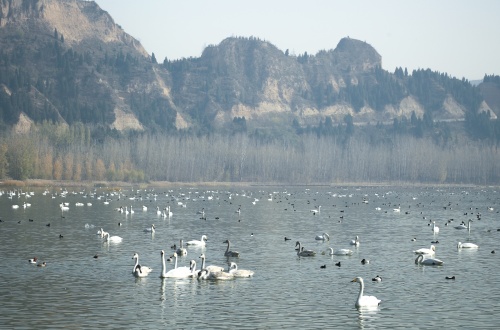Yongle Palace

Originally called the Great Pure Yang Longevity Palace, Yongle Palace lies east of Longquan Village, about 3 km north of Ruicheng County, Shanxi, covering 248,000 m². This Taoist temple honors Lü Dongbin and holds 1,000 m² of Yuan Dynasty murals—an ancient wall painting treasure.
- Chinese name:永乐宫 Yǒng Lè Gōng
- Recommended Duration: 1-2 hours
- Entrance Fee: RMB 60
-
Guided Tour Fees
1-15 people: RMB 80 per group
More than16 people: RMB 120 per group -
Opening Hours:
Peak season 8:00——18:00
Off-peak season 9:00——17:00 - Best time to visit: April–June
- Address: No.230 Yongle North Road, Ruicheng County, Yuncheng City, Shanxi Province
- How to get there: Take bus 108 from Yuncheng Bus Station to Ruicheng
Highlights of Yongle Palace
Sanqing Hall
Also known as Wuji Hall, this main building of Yongle Palace stands on a wide raised base. The hall shows classic Yuan Dynasty style with its seven-bay front and four-bay depth. On its roof, you'll see 3-meter-tall decorative animals and complex dougong supports. Inside, the famous "Assembly of the Taoist Pantheon" mural covers 400 square meters, showing 290 different gods with lively faces and special clothes. These paintings follow the traditional Wu School styles of the Tang and Song periods and are of great importance in art history.
Chunyang Hall
Also called Huncheng Hall, this shrine honors Lü Dongbin, founder of the Quanzhen Taoist school. Its 52-panel mural "The Divine Journey of Immortal Lü Dongbin" (212.62 m²) depicts his legendary deeds in comic-strip style, offering rare insights into Song-Yuan social life. The hall features Yuan-era architecture: single-eave gable and hip roof, five bays wide, three bays deep with eight rafters.
Chongyang Hall
This hall honors Wang Chongyang, founder of Quanzhen Taoism, and his seven disciples. Its 150 m² murals in comic-strip format depict Wang's life journey and enlightenment of his disciples, offering invaluable insights into contemporary society. The hall's simple timber frame structure holds significant value for studying Song-Yuan architectural techniques.
Lü Gong Shrine
Originally Lü Dongbin's birthplace and residence, this family shrine, converted from his home, features a white marble statue in its main hall. Flanking it are the "Cultivation of Nature and Life" hundred-character steles. Side rooms host relocation exhibits and displays of Lü's immortal deeds. The rear courtyard enshrines a Ming Dynasty statue of the Queen Mother of the West. Surrounded by lush gardens and connected courtyards, this serene classical temple preserves ancient elegance.
Educational Value
These Taoist murals, created to convey religious teachings and inspire devotion, predate the European Renaissance. Spanning nearly the entire Yuan Dynasty, they represent the artistic culmination of Tang-Song painting traditions. Beautifully showing Taoist values of truth, kindness, and beauty, they stand with Dunhuang's wall paintings as China's great art treasures. People call them the "Art Gallery of the East".
Activities to do at Yongle Palace
Diverse Study Programs
As a designated teaching base for China's top art academies, Yongle Palace integrates Taoist philosophy, art, and history into immersive learning experiences. Students engage in mural tracing, clay tablet painting, and outdoor stone rubbing - hands-on activities that make traditional arts both accessible and enjoyable.
Drop us a line and we'll connect you with the top China expert in no time!
 Guanque Tower
Guanque Tower  Yongle Palace
Yongle Palace  Eating in Yuncheng
Eating in Yuncheng  Weather in Yuncheng
Weather in Yuncheng